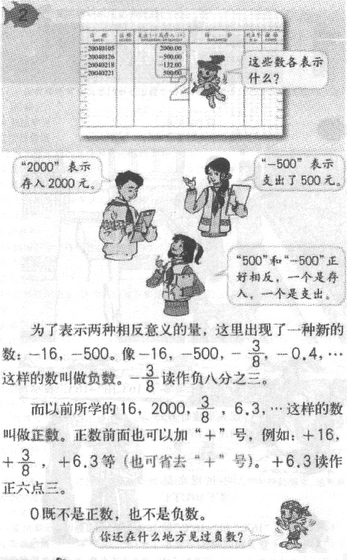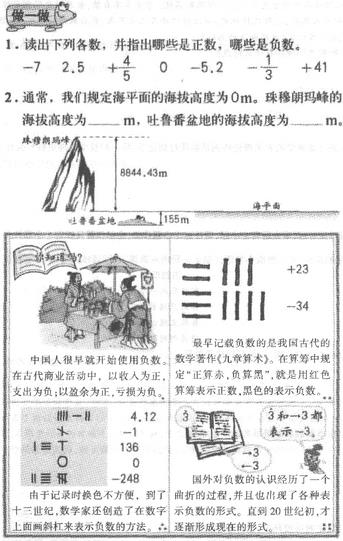请阅读下列材料,并按要求作答。



(3)根据确定的教学目标和重难点,设计本节课认识正负数的教学环节。
参考答案:
新授课教学环节设计如下:
①结合生活实例,引入表示相反意义的量。
通过多媒体课件展示:
A.六年级上学期转来6人,本学期转走6人。
B.张阿姨做生意,二月份盈利1500元,三月份亏损200元。
C.与标准体重比,小明重了2.5千克,小华轻了1.8千克。
D.一个蓄水池夏季水位上升1.4米,冬季水位下降12米。
指出:这些相反的词语和具体的数量结合起来,就成了一组组"相反意义的量"。(补充板书:相反意义的量。)
②提出问题,启发学生尝试用数学方式来表示这些相反意义的量。
请同学们选择其中的一个例子,试着写出表示方法,同桌之间相互交流。
③通过前面问题的总结补充,引出正、负数。
对学生的表示方式给予肯定:刚才,有同学在6的前面写上"+"表示转来6人,添上"-"表示转走6人,这种表示方法和数学上是完全一致的。
自然地引入负数的定义:像"-6"这样的数叫负数,这个数读作:负六。"",在这里有了新的意义和作用,叫"负号"。
与之相对应的,"+"是正号。像"+6"是一个正数,读作:正六。我们可以在6的前面加上"+",也可以省略不写。其实,过去我们认识的很多数都是正数。
④总结巩固。
通过多媒体课件展示实例:说一说存折上的数各表示什么?
请同学们分组讨论生活中可以用正、负数表示的例子,选取代表展示各小组的讨论结果。
